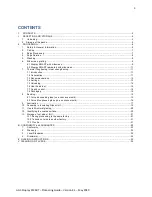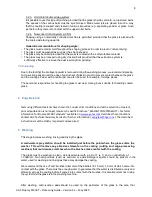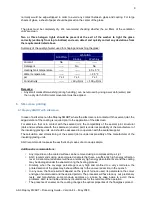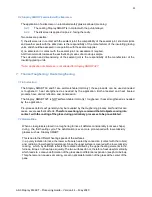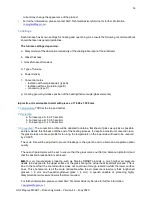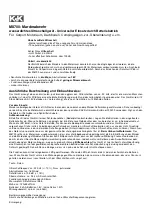
5
AGC Stopray SMART
–
Processing Guide
–
Version 4.1
–
May 2020
2.
Storage of the packs
Storing packs correctly reduces the risk of chemical or mechanical damage to the glass.
As a general rule, care should be taken to avoid major fluctuations in temperature and humidity that may
cause condensation on the glass. Such fluctuations generally occur near loading and unloading areas.
No water must be allowed to come into contact with the sheets of glass.
Care should be taken to ensure that the ambient air is not polluted by any corrosive elements such as
chlorine or sulphur. Sources of such elements include machinery fitted with heat engines, battery-
charging points, road salt on the ground and so forth.
Factory racks are used for packaging during transport and are not designed to be used for storage.
Consequently, the coated glass must be stored on racks with spacers between packs ensuring that all
packs of the same size are stored together.
Stock sheets
Special packaging requirements apply in function of the final destination of the coated glass packs.
Shelf life: the glass has to be consumed within 9 months from the delivery to the customer’s port.
When protection is needed, desiccant bags are fit on the upper side and on the lateral sides of the stack
(two thirds of the height, from the upper corners).
Once the protective packaging is opened, the remaining sheets cannot be re-packed.
Upon receipt, we advise you to check if the packaging has been damaged during transport/handling. If
the weather-proof packaging has been damaged, condensation marks may appear on the glass. In this
case, you should open the packaging to take out a desiccant pack and weigh it. Contact AGC
immediately.
However, it is important to bear in mind a number of additional points:
The sheets must be moved using a suction-pad lifting beam or an automatic unstacking machine. The
suction pads are placed on the glass side.
If the glass is handled by placing suction pads on the coating, these suction pads must be perfectly
clean and covered with a protective material.
Care must be taken to ensure that the suction pads/coating do not slip.
The personnel responsible for unloading must wear clean gloves to ensure that no fingerprints are left
on the glass.
General comments:
If, despite the precautions taken, marks do appear on the coating (fingerprints etc.) they should be
removed at once using a clean, soft and wet (water) cloth and then a dry cloth. Soft circular movement
should be applied.



